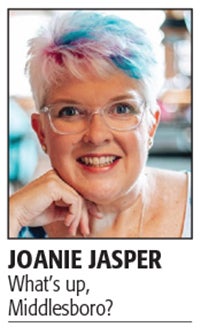Why purchase Leonardo da Vinci’s “Salvator Mundi” for $450 million?
Published 9:22 pm Tuesday, December 19, 2017
The big news in the art world the other day — and it was big — was the disclosure that Crown Prince Mohammed bin Salman, the young Saudi heir who’s detained dozens of cousins and tycoons in an anti-corruption drive, was the mysterious buyer who paid a fortune for a distinctly non-Islamic Leonardo at an auction at Christie’s in New York City last month. The man who placed the bid on the crown prince’s behalf was a little-known cousin with a lot less money but a much longer name, Prince Bader bin Abdullah bin Mohammed bin Farhan al-Saud. There were companion reports that the painting would ultimately wind up in a museum in Abu Dhabi, the United Arab Emirates’ capital and the new challenger for culture bragging rights on the Persian Gulf.
All this was sourced to American intelligence officials and other unnamed persons who know a lot about the art world. It seemed consistent with the crown prince’s pattern of working through friends to make big purchases.
But hold on! Doubts have now arisen as to whether the crown prince was the true buyer, the man who actually shelled out $450.3 million for the painting, and for whom Prince Bader was a mere gofer. The Saudi Embassy in Washington said in a statement that the true buyer was the Ministry of Culture in Abu Dhabi, where the painting will hang in a newly opened branch of the Louvre, and that Prince Bader was, in fact, the ministry’s agent.
So what really do we know? One, the buyer at auction was Prince Bader, a close friend and associate of the crown prince. No one disputes that. Two, the museum in Abu Dhabi is definitely expecting to hang the painting on its walls. The unanswered question is this: For whom or what entity was Prince Bader acting? Another question: Why would the Saudis move so quickly to say the crown prince was not the moneyman?
One possible answer is the optics — the anomaly of the crown prince doling out $450.3 million for a painting, no matter how rare or wonderful, when he has so publicly and dramatically dedicated the first six months of his heir-apparency to imposing austerity measures and rooting out corruption.
Then there’s the fact that the painting’s subject, Salvator Mundi — Jesus Christ as the savior of the world — would seem certain to antagonize religious authorities in a stern Muslim kingdom like Saudi Arabia. Jesus is recognized as a prophet in Islam, not as God, but Islam bars making images of prophets. Prince Mohammed has been trying to loosen the imposition of strict Islamic law in Saudi Arabia, but it is hard to imagine that this would be the way to go about it. Then, finally, is the curiosity of a Saudi heir doling out close to a half-billion dollars on a painting for a museum in a neighboring emirate.
The architecturally striking Louvre Abu Dhabi opened last month to great fanfare (it leased the name from the Paris Louvre for 30 years), hoping to challenge the longstanding pre-eminence on the gulf art scene of Qatar’s Museum of Islamic Art in Doha. A bona fide Leonardo would be an indisputable prize — especially when it easily beat the record Doha had held for the most ever paid for a painting, roughly $300 million for a Gauguin. (It may be worth noting that Saudi Arabia and Qatar are currently locked in a vicious feud in which the United Arab Emirates supports the Saudis.)
So if one mystery has been solved — the identity of Prince Bader, agent extraordinaire — more have been raised. Was this a game of gulf one-upmanship, with more to follow? Can the royal wunderkind of Saudi Arabia square his spending with his reforms?
— From the New York Times. Online: https://www.nytimes.com/





